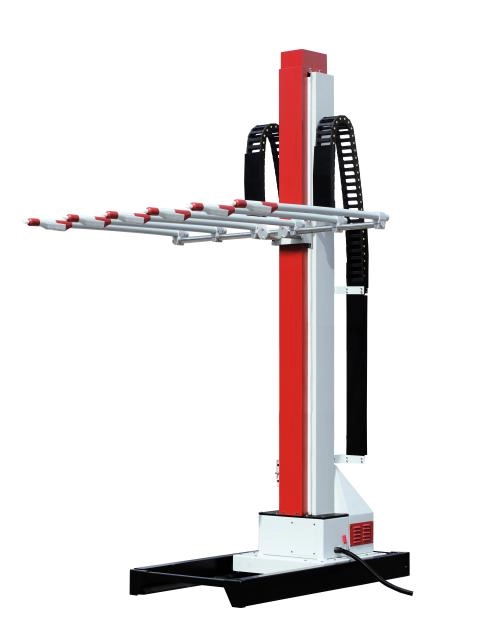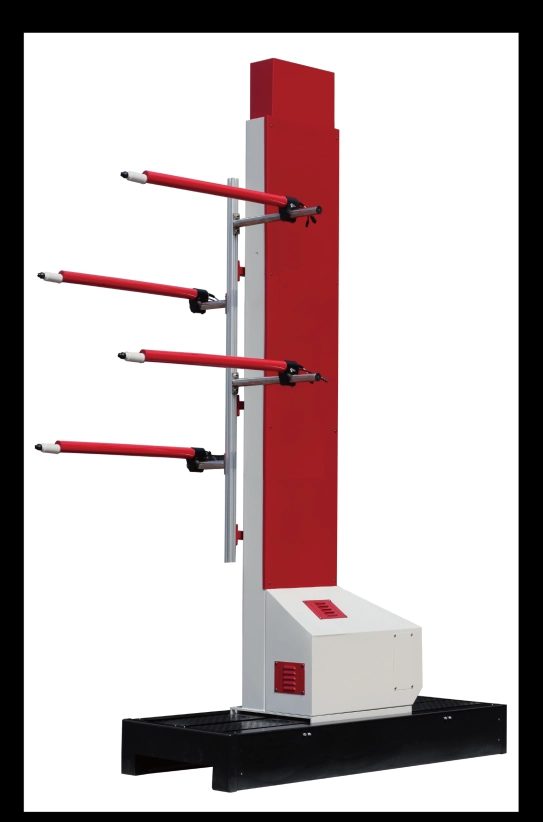Content Menu
● What Are Manual and Automatic Spray Gun Units?
>> Manual Spray Gun Units
>> Automatic Spray Gun Units
● Key Differences Between Manual and Automatic Spray Gun Units
>> 1. Operation and Control
>>> Manual Spray Guns — High Degree of Control
>>> Automatic Spray Guns — Automated Consistency
>> 2. Ideal Applications
>>> Manual Units — Small Projects and Detail Work
>>> Automatic Units — Large Areas and High-Production Environments
>> 3. Cost and Investment
>>> Manual Spray Guns — Lower Initial Cost
>>> Automatic Spray Guns — Higher Upfront Investment but Lower Labor Costs
>> 4. Portability and Flexibility
>>> Manual Spray Guns — Lightweight and Highly Portable
>>> Automatic Spray Guns — Typically Fixed or Robot Mounted
>> 5. Efficiency and Speed
>>> Manual Spray Guns — Slower for Large Areas
>>> Automatic Spray Guns — High-Speed Application
>> 6. Operator Fatigue and Ergonomics
>>> Manual Spray Guns — Potential for Operator Fatigue
>>> Automatic Spray Guns — Reduced Fatigue
>> 7. Maintenance and Cleaning
>>> Manual Spray Guns — Simpler Maintenance
>>> Automatic Spray Guns — More Complex Maintenance
>> 8. Versatility and Finish Quality
>>> Manual Spray Guns — Wide Finish Range
>>> Automatic Spray Guns — Consistent Finish
● Choosing the Right Spray Gun Unit
● Frequently Asked Questions (FAQs)
Spray guns are indispensable tools in various industries where coatings, paints, adhesives, or finishes are applied to surfaces. Choosing the right spray gun impacts not only the quality of the finish but also the speed, precision, labor, and cost efficiency of the project. Among the options available, manual and automatic spray gun units are the most commonly used, each serving different needs and circumstances. This article comprehensively explores the key differences between manual and automatic spray gun units and helps readers understand which type is ideal based on their specific applications.

What Are Manual and Automatic Spray Gun Units?
Before diving into the differences, it's essential to define what manual and automatic spray gun units are.
Manual Spray Gun Units
Manual spray guns require the user to physically operate them by pulling a trigger to release the paint or coating material. These guns rely on an external air compressor to supply pressurized air that atomizes the paint and directs it to the target surface. The operator controls the spray pattern, paint flow, and finish by modulating the trigger and adjusting various nozzle settings. Manual spray guns come in different types, such as gravity feed or pressure feed, suited for various applications ranging from small furniture parts to automotive repairs.
Automatic Spray Gun Units
Automatic spray guns operate without continuous manual triggering. Instead, they use electric motors or pneumatic systems to automate the paint feed and spray. These guns are often integrated into production lines or robotic arms, providing consistent, repeatable spray patterns for large-scale or high-volume coating projects. Operators typically control the spray parameters remotely or programmatically through production control systems.
Key Differences Between Manual and Automatic Spray Gun Units
1. Operation and Control
Manual Spray Guns — High Degree of Control
Manual units grant the operator complete control over when and how paint is applied. By pulling the trigger, the painter controls the start and stop of paint flow. Adjustments to spray patterns and paint volume are also manual, enabling diverse finishes and detailed precision work. This hands-on control is advantageous for small-scale projects, intricate detailing, and areas requiring diverse coating thickness.
Automatic Spray Guns — Automated Consistency
Automatic spray guns are designed for consistent, uniform application without requiring the operator to pull a trigger continuously. The system maintains a steady flow rate and spray pattern, ensuring repeatability across large batches or surfaces. This process focuses more on speed and efficiency rather than fine-tuned manual adjustments. Operators set parameters before or during the operation, but the gun functions independently once started.
2. Ideal Applications
Manual Units — Small Projects and Detail Work
Manual spray guns are well-suited for detailed tasks and small projects, such as automotive touch-ups, furniture finishes, or decorative coatings. They are especially beneficial for beginners learning spray techniques or when the work demands varied spray control and adaptability.
Automatic Units — Large Areas and High-Production Environments
Automatic spray guns excel in large-area coatings and high-production industries such as automotive manufacturing, appliance coatings, or industrial parts finishing. Their ability to deliver consistent quality rapidly makes them ideal for assembly lines, robotic applications, and repeatable the same finishes without operator fatigue.
3. Cost and Investment
Manual Spray Guns — Lower Initial Cost
Manual spray guns generally have a lower purchase price. This affordability makes them attractive to small businesses, hobbyists, or those with infrequent spraying needs. The equipment itself is simpler and does not require complex setup or integration.
Automatic Spray Guns — Higher Upfront Investment but Lower Labor Costs
Automatic spray guns demand higher initial investment due to automation components, control systems, and potential integration with robotics or production equipment. However, they can reduce labor costs significantly by minimizing operator intervention, increasing speed, and reducing downtime between jobs.
4. Portability and Flexibility
Manual Spray Guns — Lightweight and Highly Portable
Manual units are often lighter and easier to maneuver, making them portable for on-site or diverse environment work. Their simplicity allows use in tight spaces and unconventional angles where fixed automatic systems may struggle.
Automatic Spray Guns — Typically Fixed or Robot Mounted
Automatic spray guns are normally fixed in place or mounted on robotic arms within a production line. While they offer excellent repeatability, their portability and setup flexibility are limited compared to manual guns.
5. Efficiency and Speed
Manual Spray Guns — Slower for Large Areas
While manual guns offer detailed control, they are less efficient over large surfaces because the operator must control each spray action. Extended use can cause fatigue, reducing throughput and possibly affecting finish consistency.
Automatic Spray Guns — High-Speed Application
Automatic spray guns excel in speed, capable of coating large areas quickly and uniformly. This efficiency is critical in industrial environments where throughput and consistency are paramount.
6. Operator Fatigue and Ergonomics
Manual Spray Guns — Potential for Operator Fatigue
Manual spray painting requires continuous trigger pulling and arm manipulation, which can be physically draining for extended tasks. Operator skill and stamina significantly influence outcomes.
Automatic Spray Guns — Reduced Fatigue
By automating trigger operation and sometimes including ergonomic designs in robotic arms, automatic spray guns significantly reduce operator fatigue, allowing longer production runs and consistent application quality.
7. Maintenance and Cleaning
Manual Spray Guns — Simpler Maintenance
Manual spray guns typically feature simpler mechanisms easier to disassemble, clean, and maintain. Paint residue buildup requires regular cleaning but is straightforward with proper procedures.
Automatic Spray Guns — More Complex Maintenance
Automatic guns integrate motors, sensors, and control systems, requiring specialized knowledge for cleaning and maintenance. Malfunctions can affect production line efficiency and necessitate routine technical support.
8. Versatility and Finish Quality
Manual Spray Guns — Wide Finish Range
Manual guns, given the user's direct control, can achieve various finishes—from fine detail to broad coverage—and adapt to different paint types with appropriate nozzle adjustments.
Automatic Spray Guns — Consistent Finish
While somewhat less flexible in finish variety due to preset programs and spray patterns, automatic guns produce highly consistent coatings ideal for large batch uniformity.
Choosing the Right Spray Gun Unit
The choice between manual and automatic spray gun units hinges on several factors:
- Project Size and Scale: Small, detailed projects favor manual guns; large, high-volume projects warrant automatic guns.
- Budget Considerations: Lower budget projects benefit from manual units; higher investment projects justify automatic systems for labor savings.
- Skill Level: Beginners and hobbyists find manual guns more approachable; professionals with automation experience prefer automatic setups.
- Mobility Needs: On-site work or complex geometries suit manual guns; fixed production lines better utilize automatic guns.
- Desired Finish and Control: Manual guns afford nuanced control; automatic guns provide repeatability and speed.
Frequently Asked Questions (FAQs)
Q1: Which spray gun is more cost-effective for small businesses?
Manual spray guns are more cost-effective initially for small businesses due to their lower purchase price and simpler maintenance needs.
Q2: Can automatic spray guns be used for detailed paint jobs?
While automatic spray guns excel at large uniform coatings, they are less suitable for highly detailed or varied finish work where manual control is needed.
Q3: How does operator fatigue compare between manual and automatic guns?
Manual guns require continuous physical effort, leading to more fatigue. Automatic guns reduce operator strain as the spraying action is automated.
Q4: Are manual spray guns easier to maintain?
Yes, manual guns are generally simpler to clean and maintain due to their less complex mechanisms compared to automatic spray guns.
Q5: Which spray gun type offers better finish consistency?
Automatic spray guns provide more consistent finishes across large areas thanks to programmed control and steady paint application.

[1] https://www.patvin.co.in/blog/manual-vs-automatic-spray-guns/
[2] https://github.com/busiyiworld/maimemo-export/blob/main/exported/translation/%E6%88%90%E4%BA%BA%E6%9C%AC%E7%A7%91%E5%AD%A6%E5%A3%AB%E5%AD%A6%E4%BD%8D%E8%8B%B1%E8%AF%AD%E6%B0%B4%E5%B9%B3%E8%80%83%E8%AF%95%E5%A4%A7%E7%BA%B2.csv
[3] https://www.durr.com/en/products/paint-shop-application-technology/paint-application/spray-guns
[4] http://www.cupl.cc/kyyyzhenti.html
[5] https://www.ssindustries.com.au/news/manual-vs-automatic-paint-gun-which-one-should-choose/
[6] https://ia800600.us.archive.org/5/items/ittushu-2470/%E6%B8%85%E5%8D%8E%E5%A4%A7%E5%AD%A6%E5%9B%BE%E4%B9%A6%E9%A6%86-%E6%88%98%E7%96%AB%E7%89%88/H_%E8%AF%AD%E8%A8%80%E3%80%81%E6%96%87%E5%AD%97/12133_%E5%9B%BD%E9%99%85%E4%BA%A4%E6%B5%81%E8%8B%B1%E8%AF%AD%E9%98%85%E8%AF%BB%E8%BF%9B%E9%98%B6%E6%95%99%E7%A8%8B_text.pdf
[7] https://www.linkedin.com/posts/patvin-engineering-pvt-ltd_manual-vs-automatic-spray-guns-activity-7208757888763256833-PwDB
[8] https://www.cs.cmu.edu/afs/cs.cmu.edu/project/cmt-40/Nice/Transfer/Chinese/xferlexicon
[9] https://www.duboisequipment.com/automated-spray-coating-machine-guide/
[10] https://www.scribd.com/document/10317685/%E5%A4%A7%E5%AD%A6%E7%A7%91%E6%8A%80%E8%8B%B1%E8%AF%AD
Hot Tags: China, Global, OEM, private label, manufacturers, factory, suppliers, manufacturing company










































 .
. 